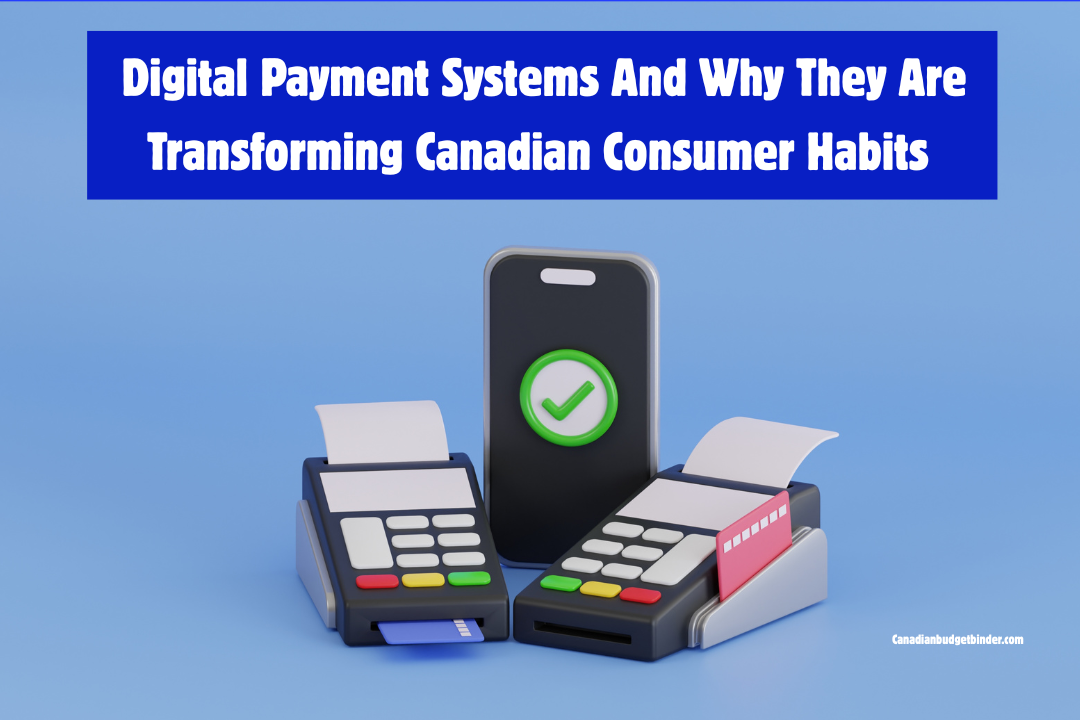Globally, 80% of consumers use at least one digital payment method. Apple Pay and Google Pay are two of the biggest. There are an estimated 65.6 million Apple Pay users and 48.59 million Google Wallet users in 2025. And as of 2024, over 2 billion people worldwide are using digital wallets such as Google and Apple Pay, a 10% increase from the previous year.
In Canada, recent data revealed that 90% of Canadian citizens opt for digital payment systems or gateways (Payments.Ca).
The world is going digital, and Canadians are right there with the rest of the crowd. Below, we’ll explore the reasons why.
The Reason Behind 90% of Canadians Using Digital Payment Systems
First, the numbers.
In 2021, digital methods made up a staggering 86% of all payment volume and 75% of total payment value in Canada. It wasn’t a slow crawl. Payment.ca released their latest report looking at the 2023 data (2024 isn’t available yet), and this is what they found:
- Credit Card Payments: 33% ↑ 9%
- Debit card 30% ↑ 6%
- Online transfer 6% ↑ 136%
- Cheques 2% ↓ 35%
The result was a payment transaction volume of $21.7 billion and a total value of $11.9 trillion.
Dig deeper, and contactless payments alone—tap-to-pay at the checkout—hit 53% of all transactions that year.
Meanwhile, nearly 99% of Canadians own debit cards, and 88% carry a credit card. That ubiquity isn’t just convenience—it’s default. The data from the Payments.ca study found that these payment methods are the most popular, accounting for 64% of e-commerce transactions.
What are the reasons why digital methods are so popular? Payment.ca puts it down to the following:
- Enhanced security
- Convenience
- Efficiency
And Canada is the world’s 8th-largest e-commerce market. People are simply shopping online more or having more online activity, where digital payments are the norm. The only exception is groceries, and even then, there’s a tendency to use contactless payments.
The Industries Where Digital Payments Are the Norm
Digital payments have invaded every corner of commerce. Here are the heavy hitters:
- Retail & E-commerce
- Transportation & logistics
- E-commerce overall
- Casinos (including iGaming)
The BFSI (Banking, Financial Services, Insurance) vertical also leads trends, while hospitality, healthcare billing, media subscriptions, and more all follow closely.
Some industries are totally cashless with their payment methods and withdrawals, like iGaming. Retail, transportation, and logistics still have some degree of cash payments. iGaming and e-commerce don’t. It has led to a trend of faster deposits and even faster withdrawals, with an instant withdrawal casino in Canada becoming the normal request for players.
Are We in a Cashless Society?
Not quiet, but we might as well be. The Bank of Canada said in 2024 that “79% of Canadians had no plans to go cashless in 2024.”
Projections indicate that cash will account for only 10% of consumer spending in Canada by 2030—down from approximately 22% in 2022. That aligns with Moneris’s forecast of a 70% drop in cash transactions by 2030 from 2014 numbers, when they accounted for 35%.
Still, Canada isn’t fully running from cash yet. The Bank of Canada found that Canadians held an average of CAD $156 in cash in 2024—up slightly (11%) from 2023. Only 13% have already gone cash-free.
So yes, we’re on course—but not there yet.
The Flaws in Digital Payment Systems
Digital payments do cause issues. Cash is secure unless it falls out of your pockets and makes someone else’s day very lucky. Digital systems have the following common flaws:
- Security & privacy risks: Digital trails are a blessing—and a curse. They can be mined, sold, leaked, or hacked.
- Coordination problems: Too many wallets, too many platforms. A buyer’s preference might not match a seller’s acceptance.
- Merchant acceptance gaps: In 2024, only just over 75% of retailers accepted digital wallets, but only 25% of shoppers had one to use. Surveys reveal 82% of merchants plan to expand their digital wallet use in 2025. In 2024, did that increase for contactless cards? Nearly 80% acceptance.
- Demographic divides: Older Canadians still hold and use cash. Average cash in-wallet was higher among 18–34-year-olds.
- Regulatory and fraud concerns: Rapid shifts expose vulnerabilities. New acts like RPAA and anti-money laundering rules strain systems that are still adapting.
How to Protect Yourself Using Digital Payment Systems
Here’s how to stay safe and protect yourself when using digital payment systems:
- Use trusted platforms: Stick with banks, established mobile wallets like Apple Pay and Interac, and trusted fintechs.
- Enable multi-factor authentication & biometrics: A fingerprint or face scan can block a thief before they even try.
- Check receipts or alerts: Set transaction limits and alerts.
- Diversify methods: Don’t keep all your eggs in one basket. A backup card or two helps if one gets compromised.
- Update regularly: Keep apps on your OS current and updated to patch security holes.
Why do 90% of Canadians use digital payment systems? Because they’re everywhere. Tap-to-pay, mobile wallets, and Interac transfers—we can’t escape them. And we guarantee that in another 10 years’ time, if we were to write this article, the numbers would show almost everyone using digital payment methods, with the minority still holding cash.
Discussion: Do you pay using digital payment systems or prefer to use cash?
Please leave your comments below.
Thanks for reading,
Mr. CBB


